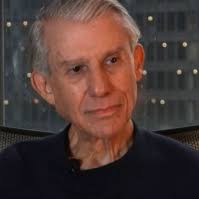This piece was reprinted by OpEd News with permission or license. It may not be reproduced in any form without permission or license from the source.
According to a November National Association of Business Economics (NABE) survey, 48 top economists expect the US economy to grow 3.2% in 2010 even though the job outlook is bleak. Overall, they're so optimistic that only 15% want more stimulus, 40% said leave the present package in place, and the other 45% want the amount approved but not spent cut because it's not needed. At the same time, according to Investors Intelligence, market sentiment is at the highest level since December 2007, shortly after equities peaked, headed down, and world economies began to crator.
In his January 5 commentary, David Rosenberg notes that "Sentiment is wildly bullish....almost every survey is overwhelmingly constructive," yet reviewing 2009's market performance in the face of economic fundamentals "almost wants to make you believe in the tooth fairy." He explained that "small business (still faces) a credit quagmire," there's no housing recovery, and household spending is retrenching and hunkering down for the long haul.
The latest US nonfarm payroll report provides more confirmation. Although the headline number was a modestly anemic -85,000, Rosenberg called it "horrible" because its details showed consistent weakness. As a result, he estimates a more accurate "465,000" December decline, based on what's occurring at the small company level "where the trend in orders, output, sales and employment" has been dismal.
Importantly, economic sectors sensitive to the business cycle actually "cratered" in December, "which flies in the face of the overwhelming view that this recession has fully run its course." Also disturbing was that while "temp help" gained 47,000 jobs, its fifth straight increase, full-time employment "plunged" 647,000 last month, a clear sign that no one is hiring, especially small businesses that do most of it.
The reason headline U-3 unemployment held steady at 10% was because the labor force plunged by 661,000, the sharpest (discouraged worker) decline in nearly 15 years. The broader U-6 unemployment is 17.3%, and economist John Williams (shadowstats.com) calculates it more accurately at 21.9% by excluding manipulated changes for more valid figures. He estimates about 500,000 December job losses, not the sanitized U-3 number. He also says that a "major double-dip downturn should be obvious by mid-year."
Economist Jack Rasmus' Outlook
Z Magazine's January issue features a bleak outlook from economist Jack Rasmus in his article titled, "Economic Crisis in 2010 and Beyond." In reviewing 2009, he argued that no recovery is possible as long as job losses and home foreclosures continue.
Looking ahead in 2010, he says "The fundamental problems of financial and consumption fragility have not been resolved." Both are deteriorating, and banks are in trouble, large and small, with 500 or more of the latter ones to fail this year. In addition, credit contraction will continue. Banks aren't lending to business or consumers. "Commercial property markets' deflation will deepen," so more Fed rescues will be needed in the face of defaults.
Next Page 1 | 2 | 3 | 4 | 5 | 6 | 7 | 8 | 9 | 10 | 11 | 12 | 13 | 14
(Note: You can view every article as one long page if you sign up as an Advocate Member, or higher).





